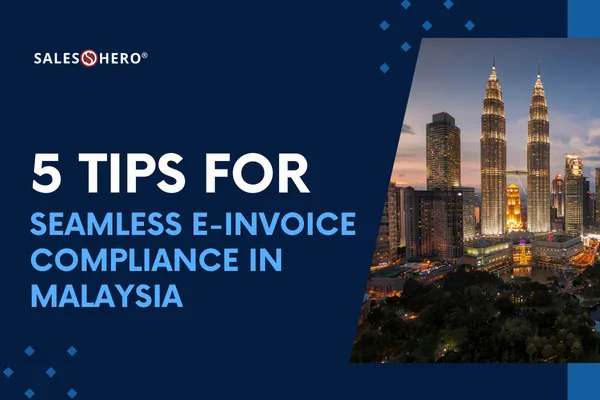
5 Tips for Seamless E-Invoice Compliance in Malaysia

Introduction:
With the Malaysian government mandating e-invoicing for businesses with an annual turnover exceeding RM100 million from August 2024, compliance is more critical than ever. Here are five tips to help your business transition smoothly to e-invoicing.
1. Understand the Regulations
Before you start, it's essential to understand the specific e-invoicing requirements set by the Malaysian Inland Revenue Board (IRBM). This includes the mandatory fields for e-invoices, the accepted formats (XML or JSON), and the validation process through the MyInvois portal (Sovos).
2. Conduct a Gap Assessment
Perform a gap analysis to identify the changes needed in your current invoicing system to comply with the new regulations. This includes checking your accounting system's compatibility, ensuring invoice format compliance, and planning for necessary upgrades (BoardRoom).
3. Invest in the Right Technology
Choose an e-invoicing solution that fits your business needs. If you process a high volume of transactions, consider integrating an API with the MyInvois portal for seamless submission and validation of e-invoices (Sovos).
4. Train Your Staff
Ensure that your employees are well-versed in the new e-invoicing process. Provide comprehensive training sessions to help them understand the technical and operational aspects of e-invoicing, from creating and submitting invoices to handling validations and rejections (BoardRoom).
5. Monitor and Optimize
Regularly monitor your e-invoicing system to ensure it operates smoothly and complies with regulations. Use real-time tracking and reporting features to identify and resolve any issues promptly, ensuring a seamless invoicing process (Kiizen IT Consulting Sdn Bhd).
Conclusion
Transitioning to e-invoicing can be a complex process, but with the right approach and tools, it can be seamless and beneficial for your business. By understanding the regulations, conducting a thorough gap assessment, investing in the right technology, training your staff, and continuously monitoring your system, you can ensure smooth and compliant e-invoicing operations.
